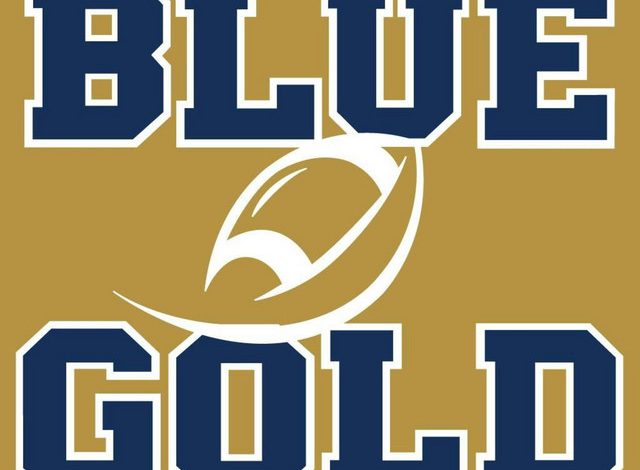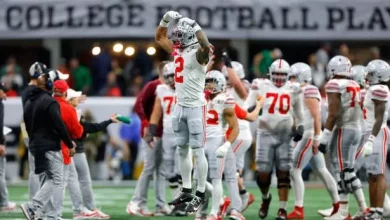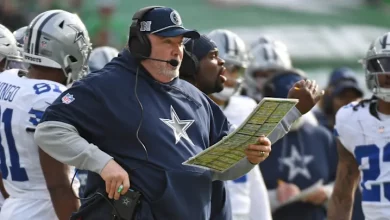Notre Dame adapts Blue-Gold tradition for changing game

Notre Dame Adapts Blue-Gold Tradition for Changing Game
For over 90 years, Notre Dame Football has been an institution not only in the world of college football but in American sports culture at large. Known for its rich traditions, iconic performances, and a fierce commitment to excellence, Notre Dame stands as one of the most storied programs in the history of the sport. The Blue-Gold Game, an annual event held every spring, has become an indelible part of the school’s football culture. What started as a simple scrimmage has transformed into a full-fledged celebration of Notre Dame football, serving as both a preview of the upcoming season and a testament to the university’s lasting commitment to the game.
However, as college football evolves—adapting to new rules, new technologies, and, most notably, the influx of NIL (Name, Image, and Likeness) deals, the transfer portal, and an increasingly competitive recruiting landscape—the way Notre Dame approaches its traditions must evolve too. The Blue-Gold Game, historically a chance to showcase the depth of the squad, highlight emerging stars, and bring fans closer to the action, is no exception. In recent years, Notre Dame has made significant adaptations to the Blue-Gold tradition to stay relevant in a rapidly changing game while preserving the essence of what made the tradition so special.
This article explores how Notre Dame has adapted its Blue-Gold tradition for the evolving landscape of college football, balancing the need to honor tradition while also embracing the necessary changes to remain competitive in the new era of college football.
A Brief History of the Blue-Gold Game
The Blue-Gold Game was first played in 1929, with the idea of creating a spring game to engage fans, evaluate players, and showcase the potential of the team heading into the fall. From its inception, the event has been part of Notre Dame’s deep-seated culture, symbolizing the start of each new football season and providing an opportunity for fans to get a glimpse of their beloved team in action.
Originally, the Blue-Gold Game was a fairly low-key affair, a controlled scrimmage between the starting lineup (the “Blue” team) and the backup players (the “Gold” team). Over time, however, the event began to grow in significance. Fans started to pack Notre Dame Stadium in anticipation of seeing their first taste of college football action since the previous season, and the Blue-Gold Game became a key event on the Notre Dame football calendar.
In addition to the game itself, the Blue-Gold tradition came to symbolize something deeper— the values of Notre Dame football: excellence, community, and family. The event was as much about showcasing the team’s talents as it was about building bonds within the university community, bringing together alumni, current students, and passionate fans from all over the country.
The Changing Landscape of College Football
In recent years, college football has gone through seismic changes, and Notre Dame is not immune to those shifts. There are a number of factors that have drastically changed how teams recruit, develop players, and even manage their rosters. These changes include the rise of NIL deals, the transfer portal, and the increasing financial and logistical complexities surrounding college athletics.
One of the most significant shifts is the NIL era, which started in 2021 and has allowed players to profit from their names, images, and likenesses. While this change has opened up new opportunities for college athletes, it has also brought about a wave of challenges for college programs. Recruiting is no longer just about evaluating talent on the field; it also involves managing financial incentives, making sure athletes secure appropriate sponsorships, and navigating the complex world of NIL deals. Programs like Alabama, Texas A&M, and USC, which have vast financial resources, have quickly capitalized on the NIL opportunity, often luring top recruits with lucrative NIL contracts.
In addition to the NIL shift, the rise of the transfer portal has changed the way teams build their rosters. No longer are programs guaranteed to hold onto players throughout their college careers. The ability to transfer freely and play immediately has led to an increase in turnover, making roster management an even more dynamic and challenging endeavor. These shifts are especially notable in a program like Notre Dame, which has historically prided itself on developing homegrown talent and maintaining a sense of continuity within its roster.
For a program like Notre Dame, which has built its reputation on tradition and stability, the need to adapt to this changing landscape without losing the essence of what makes the university and its football program so unique is an ongoing challenge. The Blue-Gold Game is just one example of how Notre Dame has sought to adapt its cherished traditions while also positioning itself for success in this brave new world of college football.
Adapting the Blue-Gold Game for the New Era
Given the increasing focus on player development, roster management, and NIL deals, Notre Dame has made several key adjustments to its Blue-Gold Game tradition in recent years. These adjustments aim to balance tradition with modern-day needs while continuing to showcase the strength of the program.
1. Incorporating NIL and Player Branding
One of the biggest changes to the Blue-Gold Game—and to Notre Dame’s approach to recruiting and player development—has been the increased focus on NIL. While Notre Dame has long been viewed as a program that values education and personal integrity, it’s also increasingly recognizing the importance of equipping its players to navigate the rapidly growing NIL landscape.
For the 2023 Blue-Gold Game, Notre Dame introduced several initiatives to showcase their athletes’ entrepreneurial and branding potential. For example, the Blue-Gold Game featured player-led social media campaigns, where players created personalized content to highlight their stories, talents, and aspirations. This allowed fans to engage with players on a deeper level and see them as individuals rather than just athletes. The event incorporated these new NIL strategies to give fans a more modern, interactive experience while also allowing players to start building their personal brands early in their careers.
Moreover, the Blue-Gold Game provided opportunities for local and national businesses to partner with Notre Dame athletes in promoting products and services. This step signaled Notre Dame’s commitment to aligning with the realities of modern college athletics without sacrificing its core values of education and integrity.
2. Showcasing the Transfer Portal Successes
The rise of the transfer portal has been one of the more dramatic shifts in college football, and it has fundamentally changed how teams recruit and build their rosters. In the past, Notre Dame was known for maintaining a strong, homegrown roster, often relying on developing players over time. But with the introduction of the transfer portal, that approach has been complicated.
Rather than viewing the transfer portal as a threat to their tradition, Notre Dame has found ways to make it a key component of its strategy. For example, during the 2023 Blue-Gold Game, several standout players who had transferred to Notre Dame made significant contributions, showcasing the program’s ability to integrate talented transfers quickly and effectively. This not only highlighted the team’s adaptability but also demonstrated that Notre Dame could compete at a high level, even in a landscape where roster turnover is higher than ever.
By featuring these transfer players in the Blue-Gold Game and telling their stories through various multimedia platforms, Notre Dame showcased its ability to adapt to the modern recruiting environment, signaling to potential recruits that transfers are a vital part of their strategy moving forward. The program highlighted how transfers can plug immediate needs, bringing in experience and talent to a team that is still focused on developing homegrown stars.
3. Virtual and Digital Engagement for Fans
As college football continues to embrace technological advancements, Notre Dame has found ways to incorporate digital elements into the Blue-Gold Game experience. Fans who cannot make it to Notre Dame Stadium in person now have access to more content than ever before. The university has offered virtual experiences, live-streamed interviews with players and coaches, behind-the-scenes footage, and interactive opportunities via social media.
In 2023, for example, Notre Dame introduced a new augmented reality (AR) feature for fans attending the Blue-Gold Game. Using their smartphones, fans were able to interact with digital representations of players and coaches, gaining insights into training, strategy, and personal stories. This level of engagement has brought the Blue-Gold Game into the modern age, enabling fans to connect with the program in ways that were previously unimaginable.
Furthermore, Notre Dame has capitalized on partnerships with major digital platforms to broaden its reach beyond traditional fans. The Blue-Gold Game has become a national event, broadcast across streaming services and TV networks, allowing fans from all corners of the country—and even from overseas—to experience the excitement and culture of Notre Dame football.
4. Fostering Competitive Spirit with a Focus on Depth
Another key shift in the Blue-Gold tradition has been the way in which the game is structured. Historically, the Blue-Gold Game was a fairly low-stakes scrimmage, with the main focus on giving fans a preview of the upcoming season. While that still holds true, the emphasis on depth and competitiveness has become more pronounced.
With so many athletes entering and leaving programs via the transfer portal, Notre Dame’s Blue-Gold Game now functions as an important assessment tool for both the coaching staff and players. The game has become a proving ground for emerging talent, offering a rare opportunity for players to compete in a live setting and showcase their skills to the coaching staff. Coaches now use this event as a platform to evaluate younger players, as well as transfers, in high-stakes situations that simulate the intensity of regular-season games.
This competitiveness has helped to create a more dynamic atmosphere for the Blue-Gold Game, making it a more serious, high-energy event that mirrors the intensity of the football season. Fans now witness fierce competition for starting spots, and the game serves as a key opportunity for players to distinguish themselves.









